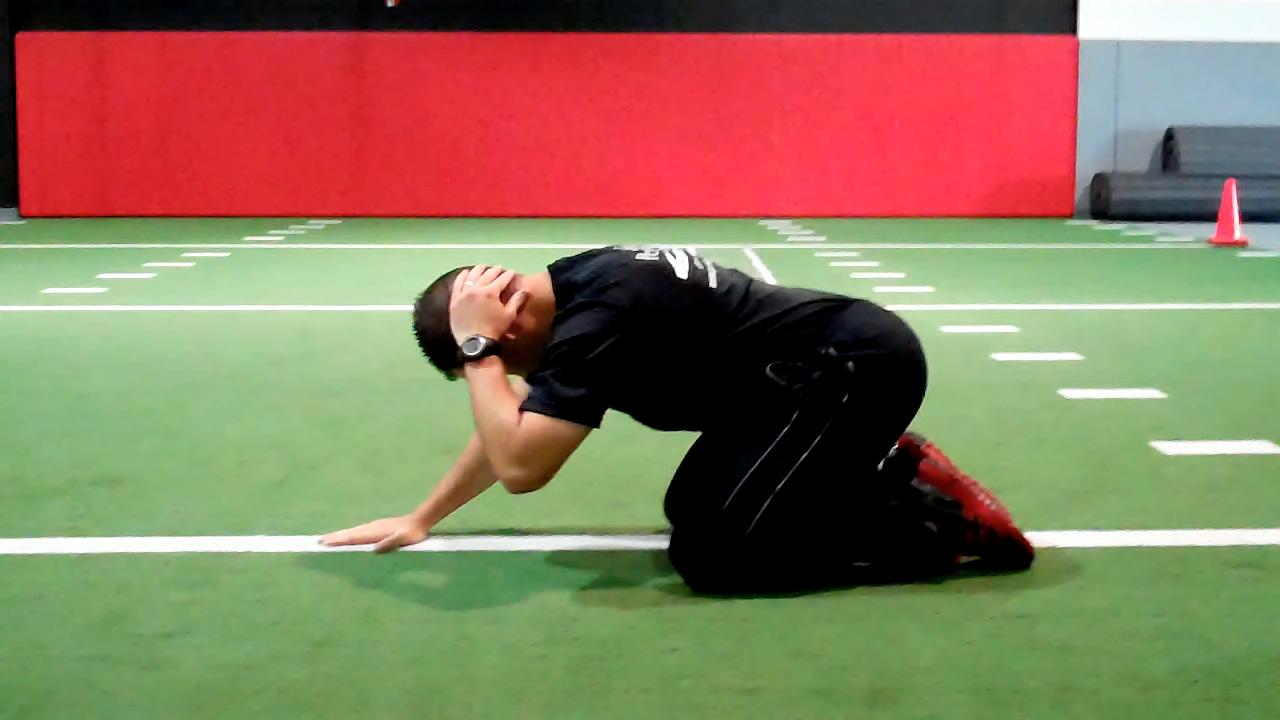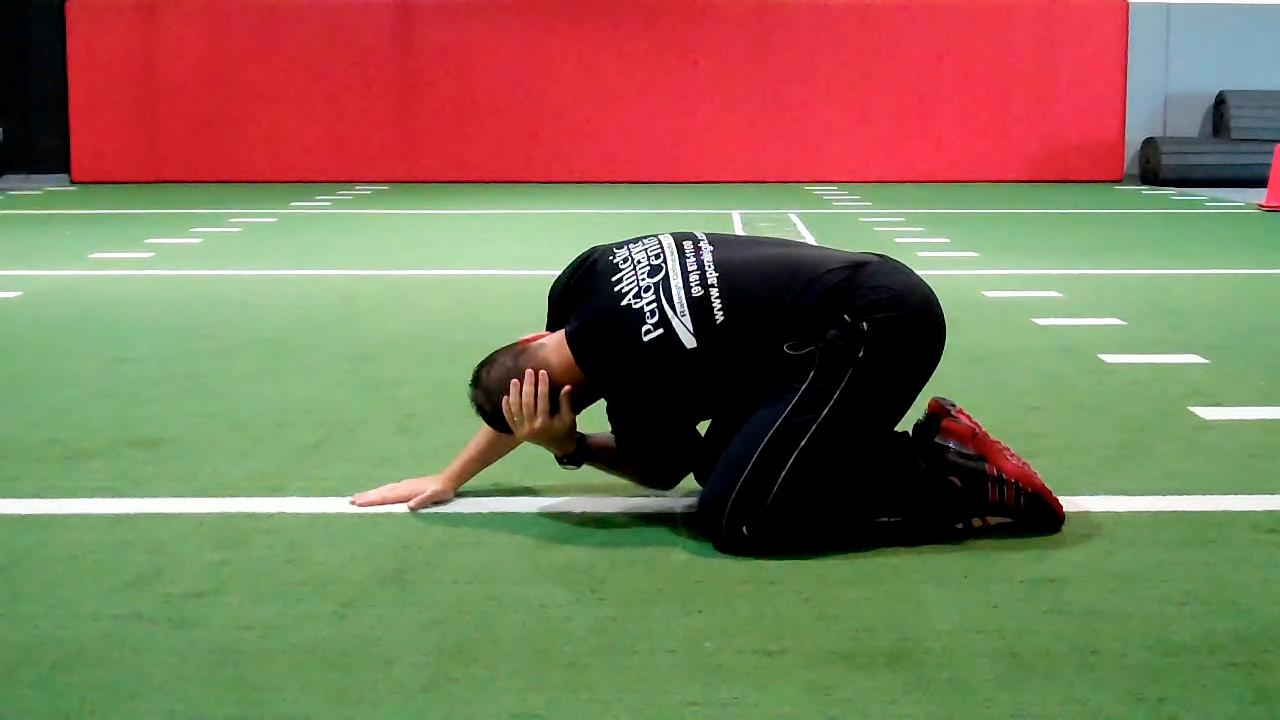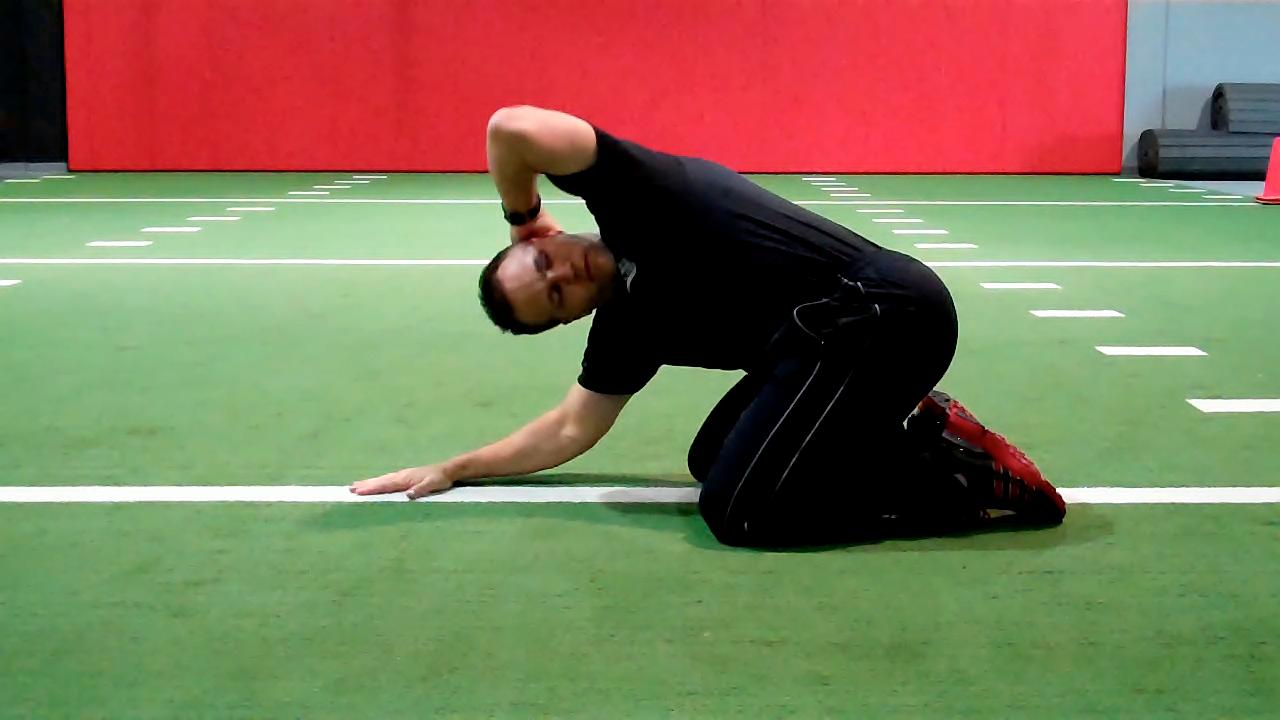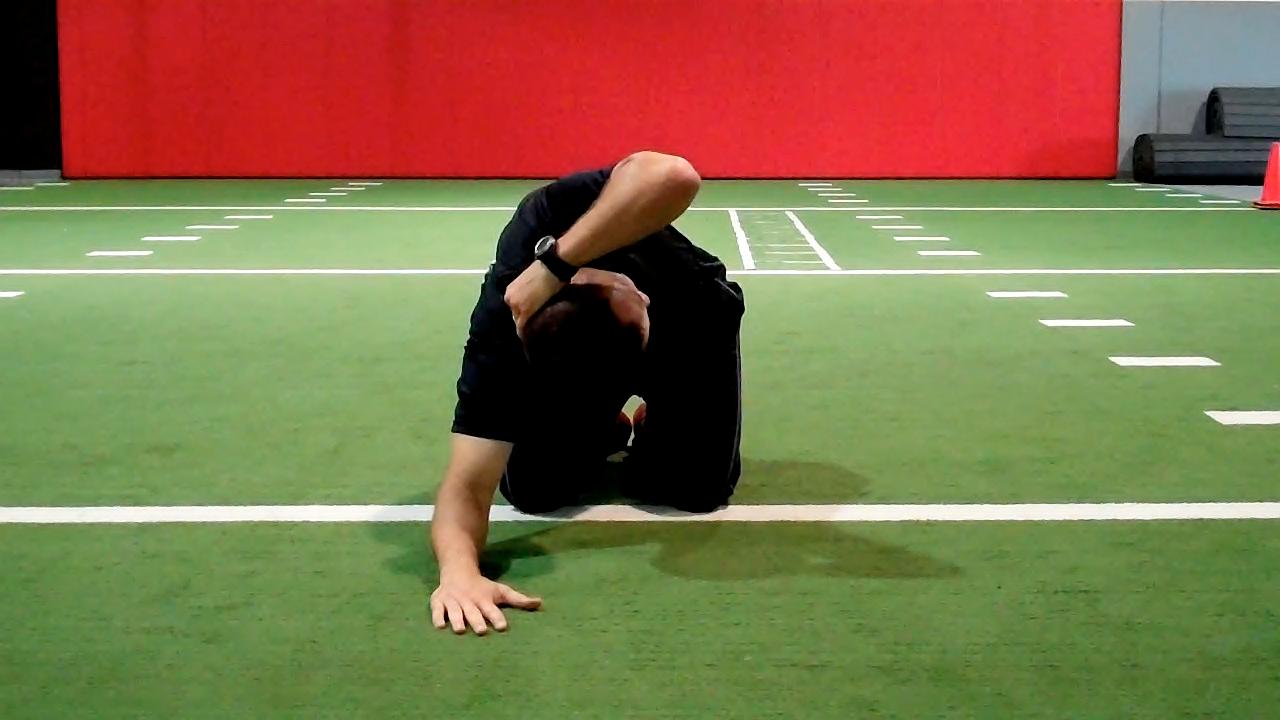
As he wraps up his tight-ankle series, Brian demonstrates two effective body weight training exercises to improve closedchain ankle dorsiflexion.
If you're just beginning the series, check out Ankle Dorsiflexion Mobility Screening and Ankle Dorsiflexion Mobilization.
Execution:
 |
 |  |
 |  |
Repeat this cycle for 10 repetitions and then switch sides. Performone to two sets on each side. Keep in mind that the motion should be performedsmoothly and deliberately, attempting to improve motion. With that said, do notforcefully push through any soreness or significant stiffness.
Application:
It is common for clients to havestiffness (whether in extension or rotation or both) in the thoracic spine. Alack of mobility here will often have a negative impact on the lumbar spine andshoulders. In this exercise, I am focusing on rotation.
Consider movements such as the tennis serve, backswing ingolf, throwing and swimming, to name a few, that rely upon thoracic spinerotation. Limited thoracic spine mobility will force other joints to sacrificestability to allow the desired movement to happen. When this occurs, issuessuch as shoulder impingement, increased torsion and hyperextension in thelumbar spine and eventual hypermobility in other segments of the kinetic chainmay occur.
Utilizing this simple technique will allow clients toindependently work on thoracic spine mobility and reduce their risk forrepetitive stress/strain injuries. My clinical and training experience hastaught me many of the athletes I see have limited thoracic spine mobility ingeneral, but overhead athletes are ones to focus in on as they tend to learn tocompensate over time to hide their deficiency.
Analyzing client activities, postures and movement willallow you to pick up on imbalances. One easy way to screen general mobility isto have your client sit on a table or chair and hold a dowel behind the head. Next,have the person slowly rotate left and right. Observe any asymmetry or notablelimitation in motion. Even if you see limitations on one side, I would stillsuggest working both directions to maximize total motion in the thoracic spine.
Brian Schiff, PT, CSCS, is a licensed physical therapist,respected author and fitness professional. Currently, he serves as thesupervisor at the Athletic Performance Center in Raleigh, NC. Brian presentsnationally at several professional conferences and seminars on injuryprevention, rehab and sport-specific training. For more cutting edge traininginformation, subscribe to his monthly Training & Sports Medicine Update at www.BrianSchiff.com.
















